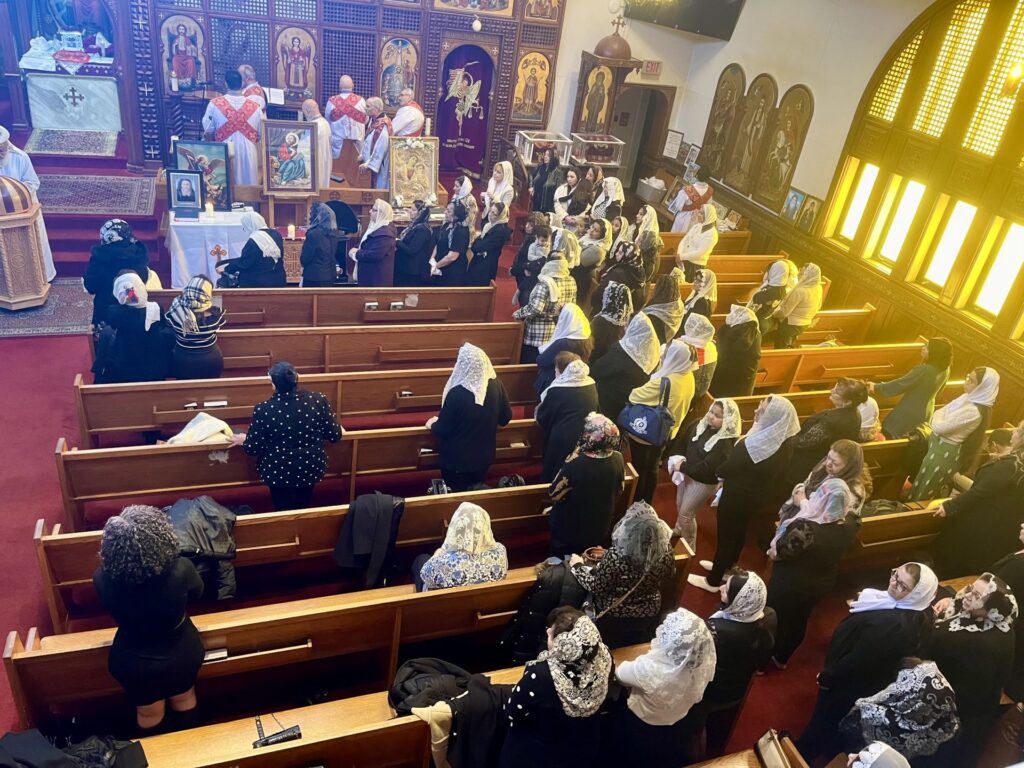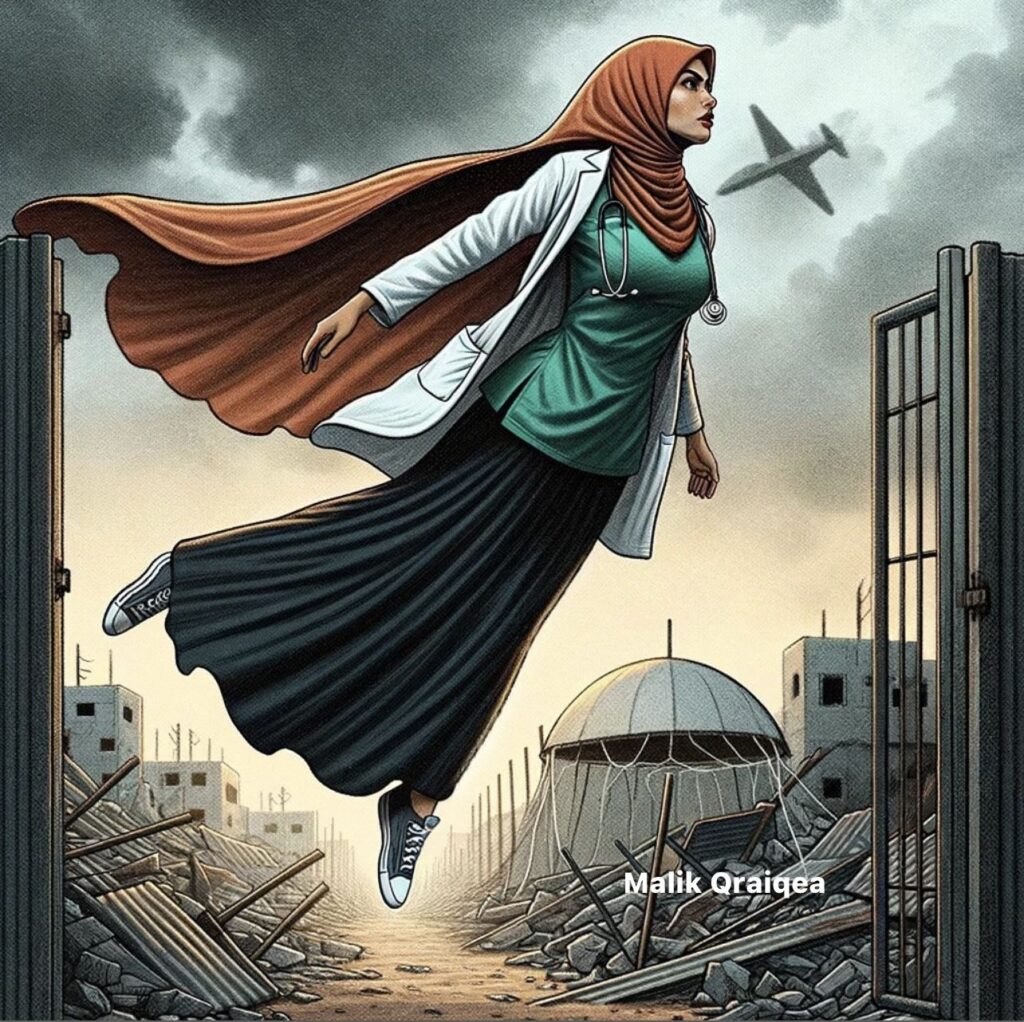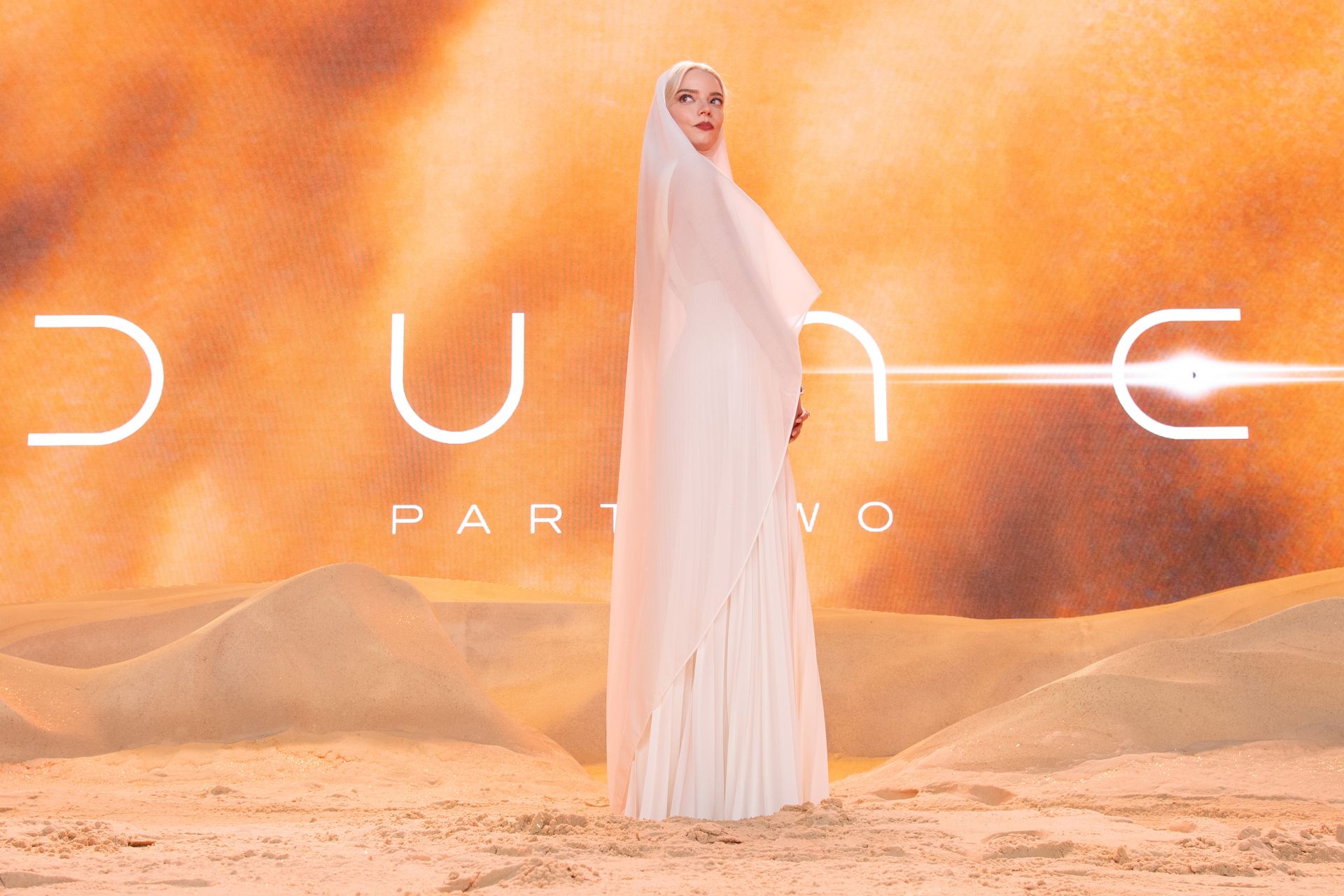At London’s world premiere of “Dune: Part Two” on Feb. 15, Hollywood favorite Anya Taylor-Joy surprised observers with her appearance — in more than one way. In the days leading up to the event, rumors began to circulate about Taylor-Joy’s involvement in the second installment of Denis Villeneuve’s take on the sci-fi novel (the third adaptation following David Lynch’s 1984 film and John Harrison’s 2000 television miniseries). “Dune” can be summarized as an emotionally charged hero’s journey featuring a protagonist by the name of Paul Atreides who must travel to the most dangerous planet in the universe to ensure the future of his family and his people. The first installment of the film was released in 2021 after delays due to COVID-19. Taylor-Joy’s appearance alongside the celebrity ensemble cast seemed to confirm her role in the second film.
But it was the way she appeared that caused a social media storm. The actress could be seen wearing a white custom Dior haute couture gown and a matching veil, her hair almost entirely covered, in the same style of hijab as Gulf Arab women. The long, flowing gown covered her body all the way to her feet, in the same way as the abaya, the garment worn by many Muslim women. To many Arab and Muslim observers, the actor was strolling down the red carpet in a Dior abaya and hijab. Social media buzzed with commentary, ranging from amusement to condemnation, as users debated the implications of her sartorial decision. Amid the frenzy of Muslim X (formerly Twitter) memes and jokes about Taylor-Joy’s conversion to Islam, deeper questions emerged about the timing and intent behind the star’s wardrobe choice.
The films and Taylor-Joy’s red-carpet look have revived a debate on systemic biases within Western institutions like Hollywood. One X user quipped, “If i was at the Dune premier, i would’ve beat everybody with a copy of Edward Said’s Orientalism,” referring to Said’s seminal theory (and book of the same name) that critiques the Western portrayal of Eastern cultures as exotic and mysterious, perpetuating harmful stereotypes. Though some have criticized the original 1965 novel by Frank Herbert on which the film is based for its aesthetic reliance on Middle Eastern and Islamic imagery, desert setting and pseudo-Arabic languages, this in and of itself does not necessarily point to Orientalist tendencies. The real issue is rather Villeneuve’s decision not to cast a single actor of Middle Eastern or North African descent in a major role in either installment of the film series, nor to employ any major writing or production staff from the region. This lack of authentic representation was dissected in an episode of New Lines’ The Lede podcast, titled “Orientalism, Salafism and Sci-Fi in the World of Dune.”
Stories about the Middle East and those featuring Arab or Muslim characters are constantly told without input from writers of the region. One friend likes to joke that “Arrival” (the 2016 sci-fi film, also directed by Villeneuve) managed to invent an entire alien language but couldn’t write Arabic script properly. Compare this with a film franchise like Marvel’s “Black Panther,” which was praised not only for its groundbreaking representation of African cultures and its cast of almost exclusively Black actors, but for allowing these Black actors to play the roles of the superheroes too. As projects like “Black Panther” show, true inclusivity can reap huge rewards (commercially and among critics), but it requires more than token gestures.
The appropriation-cum-fetishization of the hijab is not a new topic of conversation. In a global industry dominated by the Western gaze, luxury fashion houses like Gucci have faced backlash for “appropriating the hijab” while rarely featuring a bona fide hijabi model in their campaigns or on runways, or acknowledging any possible Islamic roots or references in their designs, even in cases of striking resemblance. Similarly, as we have seen with “Dune,” Hollywood is happy to celebrate the appearance of Muslim women, so long as it does not actually have to put them in movies. Dior, one of France’s most famous fashion houses, is happy to drape a Hollywood actress in a simulacrum of Islamic clothing, while real Muslim women in France are fined for wearing similar items. This hypocrisy has not gone unnoticed. Social media user @Felonious_munk called attention to this phenomenon, tweeting “Can’t wait for the @nytimes headline in the middle of Ramadan: ‘Middle Eastern and Muslim women are in love with the new fashion trend called the Anya Taylor-Joy.'”
Just as the popular phrase “driving while Black” sardonically captures the challenges Black people face in their day-to-day lives, “flying while Muslim” — a phrase that emerged during the post-9/11 wave of anti-Muslim racism and Islamophobia — conveys a parallel set of challenges for Muslims in America (as well as Canada, Europe and other regions) who visibly show their identity. The hijab, and Islamic garb more generally, have been used as a shorthand for terrorism and extremism. In the very limited representation that Muslim hijabi characters provide, they are frequently portrayed as submissive women in need of saving, or targets of violence. In 2021, the British actor Riz Ahmed, the first Muslim to be nominated for best actor at the Oscars, launched a fund called the Blueprint for Muslim Inclusion to help combat the “toxic portrayals” of Muslims on-screen. “When is it deemed acceptable for women to wear their traditional clothing, and when is it labeled with ‘terrorism’ enough to ban it and wage a war against it?” read one social media caption addressing Taylor-Joy’s outfit choice, by creative platform Slow Factory.
It’s worth noting that the hijab isn’t exclusively a Muslim symbol; it holds cultural significance across the Middle East and beyond. For instance, during many Christian church services, women traditionally wear veils as a sign of reverence and modesty, echoing the broader cultural significance of veiling. I’ve always enjoyed taking stock of the veils around me when I attend a Coptic church service: some printed with images of revered saints, some simple white strips of lace with crosses sewn into them and some imitation designer silk scarves of all different colors and patterns. Search “Christian veiling” on platforms like TikTok and you’ll come upon videos of young white and Black, American and British women demonstrating how they incorporate a veil into their regular wardrobe. Even Christianity’s central female figure is almost exclusively depicted with a veil and tunic. In South Asia, some married Hindu, Jain and Sikh women wear a ghoonghat (derived from the Sanskrit word for veil) to cover their heads, and often their faces. Yet, in popular imagination, the hijab has become synonymous with Muslim women, and Arab Muslim women in particular.

Despite being criticized for the problematic outfit, neither the actor nor anyone associated with the film has responded. Taylor-Joy isn’t the first celebrity to make a questionable fashion statement that hinges on the culturally insensitive. Kim Kardashian has been accused plenty of times of Blackfishing — or altering her appearance to look more like a Black woman — for the looks she’s chosen, like rocking her hair in cornrows. But more often than not, celebrities respond to these criticisms, as Kardashian did when she said she was “inspired” by the Black women who created these aesthetics. During the height of racial tensions in America following George Floyd’s murder by a police officer in 2020, Florence Pugh, who stars alongside Taylor-Joy in “Dune: Part Two,” took to Instagram to apologize for her own “actions of cultural appropriation” such as wearing her hair in cornrows. It’s not merely the lack of sensitivity around this latest Dune controversy that stands out, it’s that the actors involved see no reason to even engage with the fans on these topics.
But there is another layer that should be considered about why the mere resemblance carries profound implications. The stark contrast between the virality of Taylor-Joy’s outfit on the red carpet and the haunting images of Palestinians in Gaza — many of them veiled Palestinian women grieving for their children and trying to escape deadly bombing raids — is jarring.
While Taylor-Joy’s attire captivated social media with its glamor and controversy, the images emerging from Gaza depict a harrowing reality of displacement, loss and profound anguish. As viral Palestinian TikTok user @iamsbeih explains, women in Gaza are now often seen donning their prayer garments, or “awai salah.” This is not only for religious observance but also as a last vestige of dignity. These garments (which always include hijabs), traditionally worn for prayer in everyday life, take on new significance as women escape the deadly onslaught of Israeli bombing campaigns with their families, leaving behind homes and possessions. They are not merely articles of clothing but symbols of faith, tradition and steadfastness in the face of adversity. Amid the chaos of displacement and its moments of desperation, when every possession is a burden and every step is fraught with uncertainty, the choice to wear these garments speaks volumes about Palestinian women.
Just one week before the “Dune: Part Two” premiere, a video featuring a brave hijabi doctor performing what can only be described as an act of heroism made the social media rounds. Filmed in Gaza at Khan Younis’ Al-Nasser medical complex, an unhesitating Dr. Amira al-Assouli can be seen ripping off her coat and bending over as she runs across the courtyard toward an injured young Palestinian man who had been shot by soldiers and left alone to die. Despite being surrounded by Israeli snipers and gunfire, al-Assouli was able to help load the man onto a stretcher and bring him into the hospital. She was instantly touted as a superhero, with at least one admirer quick to create an image depicting the retired obstetrician striking a superhero pose, with her orange hijab fluttering behind her in the place of a cape. Just as the images coming out of Gaza are painful reminders of the urgency of the catastrophe, they are often also a testament to the enduring strength of Palestinian women like al-Assouli.

The “Dune: Part Two” premiere in London didn’t take place in a vacuum — timing and context matter. We saw this just a few months ago with the Zara ad campaign that featured the model Kristen McMenamy posing with statues with missing limbs while surrounded by rubble. Zara was forced to pull the ads after widespread backlash against the fashion giant and even demonstrations in some places. The horrific videos and images coming out of Gaza are impossible to avoid; they are on our TV screens and our social media feeds are replete with endless reels of them. While star-studded red-carpet extravaganzas playing into Hollywood fantasy take place, the devastation wrought on the people of Gaza does not stop. The harsh reality of the war on Gaza is precisely what hundreds of thousands of people in places like London, where the premiere took place, have taken to the streets to demonstrate against, for months now.
As I sifted through social media comments about Taylor-Joy’s outfit, a thought kept interrupting: The irony of the hijab is that, while traditionally associated with modesty and discouraging attention, in many contexts wearing it produces the opposite effect. Taylor-Joy’s fashion choice was drawing scrutiny and fascination. Yet while used as a symbol of glamor and mystique on the red carpet, worlds away, the veil evokes poignant images of unimaginable suffering and loss — but also superheroic resilience.
“Spotlight” is a newsletter about underreported cultural trends and news from around the world, emailed to subscribers twice a week. Sign up here.



